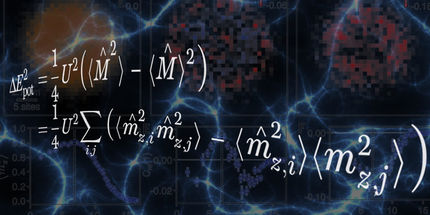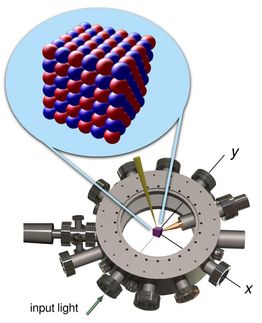Superconductors earn their stripes
New Terahertz techniques help to detect striped superconductivity above the superconducting transition temperature in cuprates.
Understanding high temperature superconductivity (high Tc) has been a long-standing challenge since its discovery in copper oxide compounds in 1986. A key issue in addressing this problem has involved the study of phases found near superconductivity, typically at temperatures in excess of Tc or at doping levels lower than those needed to achieve this state.
Now a team led by scientists from the Max Planck Institute for Structure and Dynamics (MPSD) in Hamburg has provided the first evidence of a hidden superconducting state above the superconducting transition temperature. Such a state has been elusive to detect since it is invisible to most experimental probes.
Rajasekaran and coworkers used new terahertz techniques to detect this striped superconductivity above the superconducting transition temperature in cuprates. It occurs because the fluid carrying lossless currents is not homogenously distributed, but arranges itself in stripes: one-dimensional rivers that rotate by ninety degrees along one axis of the crystal.
Superconductivity, a phenomenon involving the lossless transport of electricity, was first observed in metals cooled almost to absolute zero (~ ‑270 degrees Celsius). Over the last few decades other ceramic materials such as doped copper oxides (cuprates) have been discovered, where superconductivity occurs at much higher temperatures (Tc ~ -150 degrees Celsius). The mechanism behind this high temperature superconductivity remains a mystery.
Cooled cuprates not only develop superconductivity but also host other states that interact with the superconducting fluid. Especially interesting is a state that appears to be intertwined with the superconductor, where the fluid is arranged in a spatially modulated, rather than a homogeneous fashion. Although such striped superconductors do not carry supercurrents efficiently, their manipulation may be used to enhance the temperature for superconductivity.
Cuprate superconductors are in fact layered materials with alternating superconducting and insulating planes. The superfluid phase is formed in each layer, and three-dimensional superconductivity is made possible by quantum mechanical tunneling in the direction perpendicular to the planes.
In a striped superconductor, tunneling currents are identically zero. That is, these currents flow at each point in space, but the sum over space vanishes identically. Hence, it is difficult ot detect the presence of the striped superconductor.
Rajasekaran, Cavalleri and coworkers tackled this problem by driving strong tunneling currents, far in excess of the levels usually used to diagnose the presence of a superfluid. In their geometry, the tunneling was observed to be no longer zero even in case of striped superconductivity.
Together with theory colleagues from Ludwig Mathey’s group at the University of Hamburg, the MPSD scientists have also provided a quantitative description of the results, which now rest on a solid theoretical foundation.
This study, largely related to previous works in the Cavalleri group aimed at manipulating hidden superconductivity in complex materials, opens up new possibilities to study other types of hidden orders in many other condensed matter systems.
Other news from the department science

Get the chemical industry in your inbox
By submitting this form you agree that LUMITOS AG will send you the newsletter(s) selected above by email. Your data will not be passed on to third parties. Your data will be stored and processed in accordance with our data protection regulations. LUMITOS may contact you by email for the purpose of advertising or market and opinion surveys. You can revoke your consent at any time without giving reasons to LUMITOS AG, Ernst-Augustin-Str. 2, 12489 Berlin, Germany or by e-mail at revoke@lumitos.com with effect for the future. In addition, each email contains a link to unsubscribe from the corresponding newsletter.
Most read news
More news from our other portals
Last viewed contents

ARGUS - Additive Plastics GmbH - Büren, Germany

E+E Elektronik Ges.m.b.H. - Engerwitzdorf, Austria

BASF Argentina S.A. - Buenos Aires, Argentina
Lehigh University professor receives Astellas Award for arsenic groundwater remediation efforts

L&R Kältetechnik GmbH & Co.KG - Sundern, Germany
Deep Earth heat surprise

Bohncke GmbH - Hünstetten-Wallbach, Germany

TRM Systec - Ettringen, Germany





























































